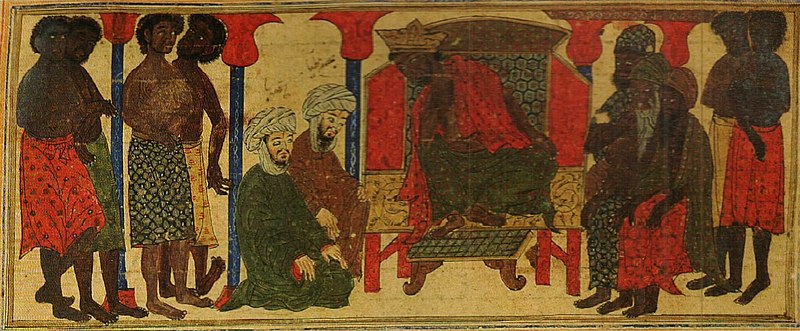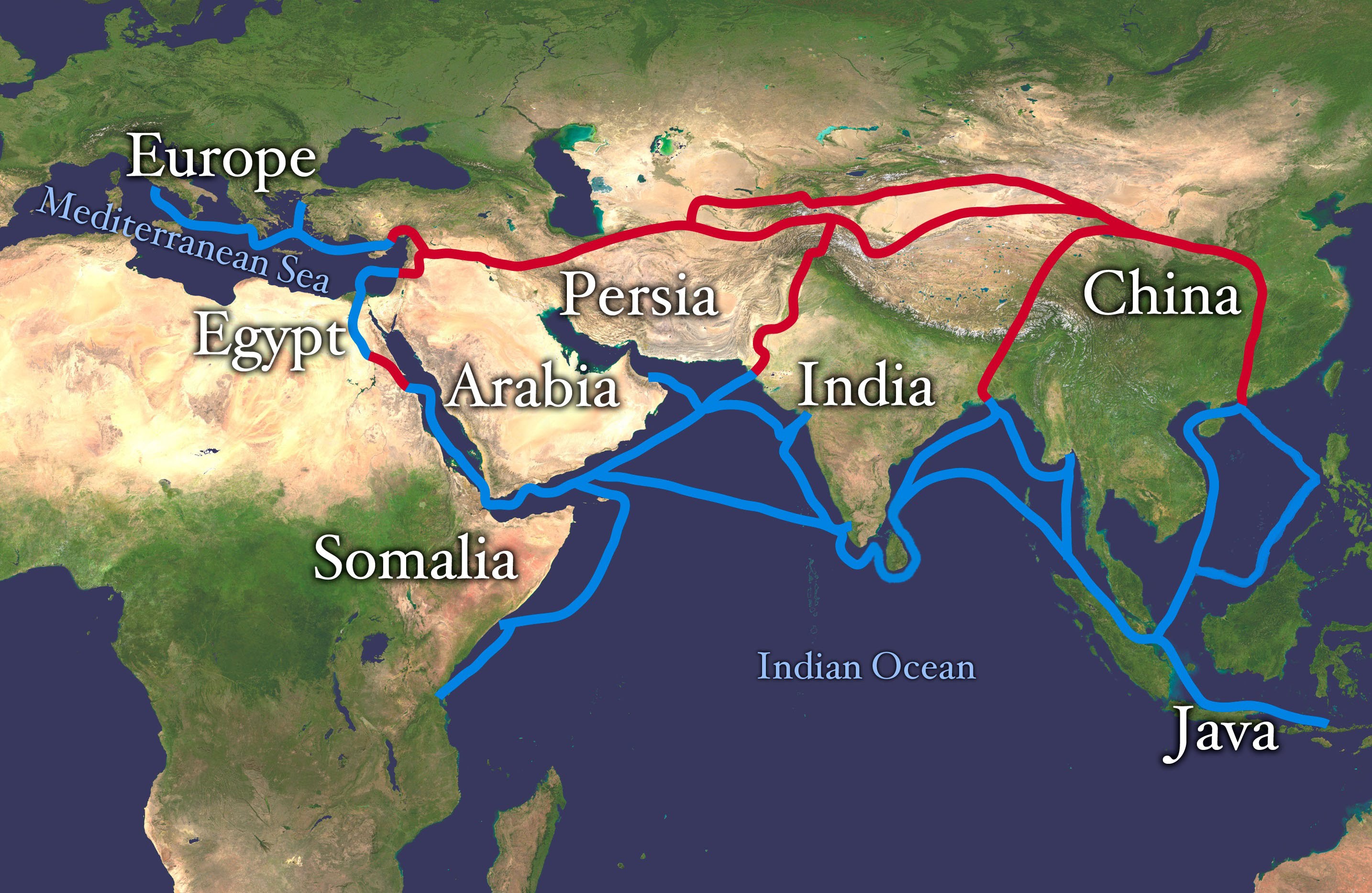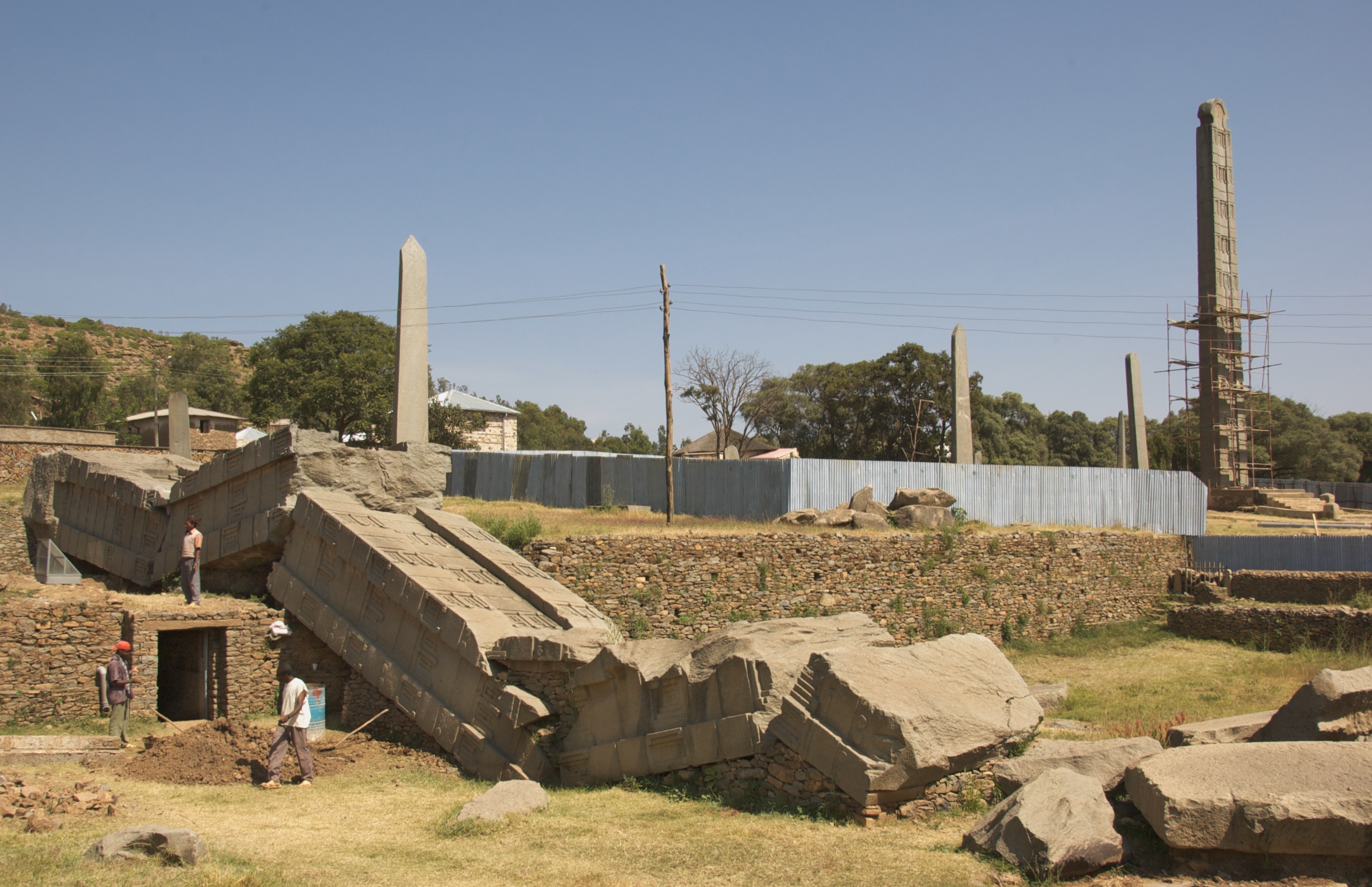Kingdom of Aksum
- The Kingdom of Aksum (c. 100 AD – c. 940 AD) was a trading empire centered in Eritrea and northern Ethiopia. At its height the empire extended across most of present-day Eritrea, Ethiopia, Somalia, Djibouti, Sudan, Egypt, Yemen and Saudi Arabia. The Manichaei prophet Mani regarded Axum as one of the four great powers of his time, the others being Persia, Rome, and China.
- The kingdom had it's own writing system called Ge'ez
- The Aksumite polity grew from the proto-Aksumite Iron Age period around the 4th century BC to achieve prominence by the 1st century AD. According to the Book of Aksum, Aksum's first capital, Mazaber, was built by Itiyopis, son of Cush. The capital was later moved to the city of Axum in northern Ethiopia. The Kingdom used the name "Ethiopia" as early as the fourth century.
- Aksum became a major player on the commercial route between the Roman Empire and Ancient India. The Aksumite rulers facilitated trade by minting their own Aksumite currency. From the reign of Endubis (c. 270 – c. 300) up to Armah (c. 270 - 610), gold, silver and bronze coins were minted.
- The Aksumites had cemeteries with elaborate grave stones called stelee or obelisks, which served a religious purpose in pre-Christian times. One of these granite columns is the largest such structure in the world, at 90 feet.
-
Under Ezana (fl. 320–360) Aksum adopted Christianity in place of its former polytheistic and Judaic religions around 325.
Ethiopian sources such as the Kebra Nagast and the Fetha Nagast describe Aksum as a Jewish Kingdom. The Kebra Nagast contains a narrative of how the Queen of Sheba/Queen Makeda of Ethiopia met King Solomon and traces Ethiopia's to Menelik I, her son by King Solomon of Israel. In its existing form the Kebra Nagast is at least 700 years old and is considered by the Ethiopian Orthodox Tewahedo Church to be a reliable and historic work.
Tradition claims Axum as the alleged resting place of the Ark of the Covenant and the purported home of the Queen of Sheba. - Around 330 AD, Ezana of Axum led his army into the Kingdom of Meroë, conquering and sacking the town itself. A large stone monument was left there, and the conquest is also related on the Ezana Stone.
- Around 520, King Kaleb sent an expedition to Yemen against the Jewish Himyarite king Dhu Nuwas, who was persecuting the Christian community there. For nearly half a century south Arabia would become an Ethiopian protectorate under Abraha and his son Masruq.
- In the late sixth century, Sasanian Empire of Persia and the Ethiopia-based Aksumite Empire fought a series of wars over control of the Himyarite Kingdom in Yemen, Southern Arabia known as the Aksumite–Persian wars. It marked the end of Ethiopian rule in Arabia.
- In the 7th century, early Muslims from Mecca sought refuge from Quraysh persecution by travelling to the kingdom, a journey known in Islamic history as the First Hijra.
-
After a second golden age in the early 6th century the empire began to decline in the mid 6th century, eventually ceasing its production of coins in the early 7th century. Around this same time, the Aksumite population was forced to go farther inland to the highlands for protection, abandoning Aksum as the capital.
Local history holds that, around 960, a Jewish Queen named Yodit (Judith) or "Gudit" defeated the empire and burned its churches and literature. While there is evidence of churches being burned and an invasion around this time, her existence has been questioned by some modern authors. Another possibility is that the Aksumite power was ended by a southern pagan queen named Bani al-Hamwiyah, possibly of the tribe al-Damutah or Damoti (Sidama). It is clear from contemporary sources that a female usurper did indeed rule the country at this time, and that her reign ended some time before 1003.
Ezana of Axum
‘Ezana of Axum (Ge'ez: ዒዛና ‘Ezana, unvocalized ዐዘነ ‘zn; also spelled Aezana or Aizan) was ruler of the Kingdom of Aksum (320s – c. 360 AD) located in present-day northern Ethiopia, Yemen, part of southern Saudi Arabia, northern Somalia, Djibouti, Eritrea, and parts of Sudan. He himself employed the style (official title) "king of Saba and Salhen, Himyar and Dhu-Raydan". Tradition states that ‘Ezana succeeded his father Ella Amida (Ousanas) while still a child and his mother, Sofya served as regent.
Axum
Axum or Aksum (/ˈæksuːm/; Tigrinya: ኣኽሱም Ak̠ʷsəm; Amharic: አክሱም Ak̠sum) is the site of the historic capital of the Kingdom of Aksum. The Kingdom of Axum was a naval and trading power that ruled the region from about 400 BCE into the 10th century. In 1980, UNESCO added Axum's archaeological sites to its list of World Heritage Sites due to their historic value.
Dungur
Dungur (or Dungur 'Addi Kilte) is the ruins of a substantial mansion in Aksum, Ethiopia, the former capital city of the Kingdom of Aksum. The ruins are in the western part of Aksum, across the road from the Gudit stelae field. Dungur is known locally and popularly as the Palace of the Queen of Sheba (i.e. the Palace of Makeda in Ethiopia). However, Stuart Munro-Hay describes it as "the sort of dwelling that a prosperous Aksumite, perhaps a noble or high official of the fourth to sixth centuries AD, might have constructed for himself."
Church of Our Lady Mary of Zion
The Church of Our Lady Mary of Zion (Amharic: ርዕሰ አድባራት ቅድስተ ቅዱሳን ድንግል ማሪያም ፅዮን Re-ese Adbarat Kidiste Kidusan Dingel Maryam Ts’iyon) is an Ethiopian Orthodox Tewahedo Church in Ethiopia. It is claimed to contain the Ark of the Covenant. It is located in the town of Axum, Tigray. The original church is believed to have been built during the reign of Ezana the first Christian ruler of the Kingdom of Axum (Present-day Eritrea and Ethiopia), during the 4th century AD, and has been rebuilt several times since then.
Gudit
Gudit (Ge'ez: ጉዲት, Judith) was a non-Christian queen (flourished ca. 960) who laid waste to Axum and its countryside, destroyed churches and monuments, and attempted to exterminate the members of the ruling dynasty of the Kingdom of Aksum. Her deeds are recorded in the oral tradition and mentioned incidentally in various historical accounts.
Frumentius
Saint Frumentius (Ge'ez: ፍሬምናጦስ Fremnāṭos; born in Tyre, Eastern Roman Empire, in the early fourth century, died circa 383, Kingdom of Aksum) was the first bishop of Axum, and is credited with bringing Christianity to the Kingdom of Aksum. He is sometimes known by other names, such as Abuna ("Our Father") and Aba Salama.
Kaleb of Axum
Kaleb (c. 520) is perhaps the best-documented, if not best-known, King of Axum, a kingdom that was situated in modern-day Eritrea and Tigray, Ethiopia. Procopius of Caesarea calls him "Hellestheaeus", a variant of his throne name Ella Atsbeha or Ella Asbeha (Histories, 1.20). Kaleb, a name derived from the Biblical character Caleb, is his given biblical name; on both his coins and inscriptions he left at Axum, as well as Ethiopian hagiographical sources and king lists, he refers to himself as the son of Tazena.
Agaw people
The Agaw (Ge'ez: አገው Agäw, modern Agew) are an ethnic Cushitic peoples inhabiting Ethiopia and neighboring Eritrea. They speak Agaw languages, which belong to the Cushitic branch of the Afroasiatic language family.
Monumentum Adulitanum
The Monumentum Adulitanum was an ancient bilingual inscription in Ge'ez and Greek depicting the military campaigns of an Adulite king. The monument was found in the port city state of Adulis (in modern-day Eritrea). Though the inscription and the monument have never been located by archaeologists, it is known about through the copying of the inscription by Cosmas Indicopleustes, a 6th-century Greek traveller-monk. The original text was inscribed on a throne in Adulis (Ge'ez: መንበር manbar) written in Ge'ez in both the Ge'ez script and Sabean alphabet, while the Greek was written in the Greek alphabet. Seeing that the text was in Greek and followed an inscription about King Ptolemy III Euergetes's conquests in Asia, Cosmas Indicopleustes mistook the Aksumite inscription for the continuation of Ptolemy's.
Aksumite Currency
Aksumite currency was coinage produced and used within the Kingdom of Aksum (or Axum) centered in present-day Eritrea and the Tigray Region of Ethiopia. Its mints were issued and circulated from the reign of King Endubis around AD 270 until it began its decline in the first half of the 7th century. During the succeeding medieval period, Mogadishu currency, minted by the Sultanate of Mogadishu, was the most widely circulated currency in the Horn of Africa.
Himyarite Kingdom
The Ḥimyarite Kingdom or Ḥimyar (Arabic: مملكة حِمْيَر, Mamlakat Ḥimyar, Musnad: 𐩢𐩣𐩺𐩧𐩣, Hebrew: ממלכת חִמְיָר) (fl. 110 BCE–520s CE), historically referred to as the Homerite Kingdom by the Greeks and the Romans, was a kingdom in ancient Yemen. Established in 110 BCE, it took as its capital the ancient city of Zafar, to be followed at the beginning of the 4th century by what is the modern-day city of Sana'a.
Periplus of the Erythraean Sea
The Periplus of the Erythraean Sea (Greek: Περίπλους τῆς Ἐρυθρᾶς Θαλάσσης, Períplous tē̂s Erythrâs Thalássēs), also known by its Latin name as the Periplus Maris Erythraei, is a Greco-Roman periplus written in Koine Greek that describes navigation and trading opportunities from Roman Egyptian ports like Berenice Troglodytica along the coast of the Red Sea, and others along Horn of Africa, the Sindh region of Pakistan, along with southwestern regions of India.
Book of Aksum
The Book of Aksum (Ge'ez መጽሐፈ ፡ አክሱም maṣḥafa aksūm, Amharic: meṣhafe aksūm, Tigrinya: meṣḥafe aksūm, Latin: Liber Axumae) is the name accepted since the time of James Bruce for a collection of documents from St. Mary's Cathedral of Aksum providing information on Ethiopian history. The earliest parts of the collection date to the mid-15th century during the reign of Zar'a Ya`qob (r. 1434-1468).
Ezana Stone
The Ezana Stone is a stele from the ancient Kingdom of Aksum. The stone monument documents the conversion of King Ezana to Christianity and his conquest of various neighboring areas, including Meroë.
Esimiphaios
Esimiphaios or Samu Yafa' (Musnad: 𐩪𐩣𐩺𐩰𐩲 𐩱𐩦𐩥𐩲; Arabic: سميفع أشوع) was a local Christian lord, domestically known as Qil (Arabic: قيل, translit. Qēl), mentioned in an inscription celebrating the burning of an ancient Sabaean palace in Marib to build a church on its ruins. Three new churches were built in Najran alone.
Abraha
Abraha (also spelled Abreha, died after CE 553;[1] r. 525–at least 553[2]), also known as Abraha al-Ashram (Arabic: أبرهة الأشرم), was an Aksumite army general, then the viceroy of southern Arabia for the Kingdom of Aksum, and later declared himself an independent King of Himyar. Abraha ruled much of present-day Arabia and Yemen from at least 531–547 CE to 555–565 CE.
The kingdom of Aksum
One of the four greatest powers in the world
This page uses materials from Wikipedia available in the references. It is released under the Creative Commons Attribution-Share-Alike License 3.0.
References



